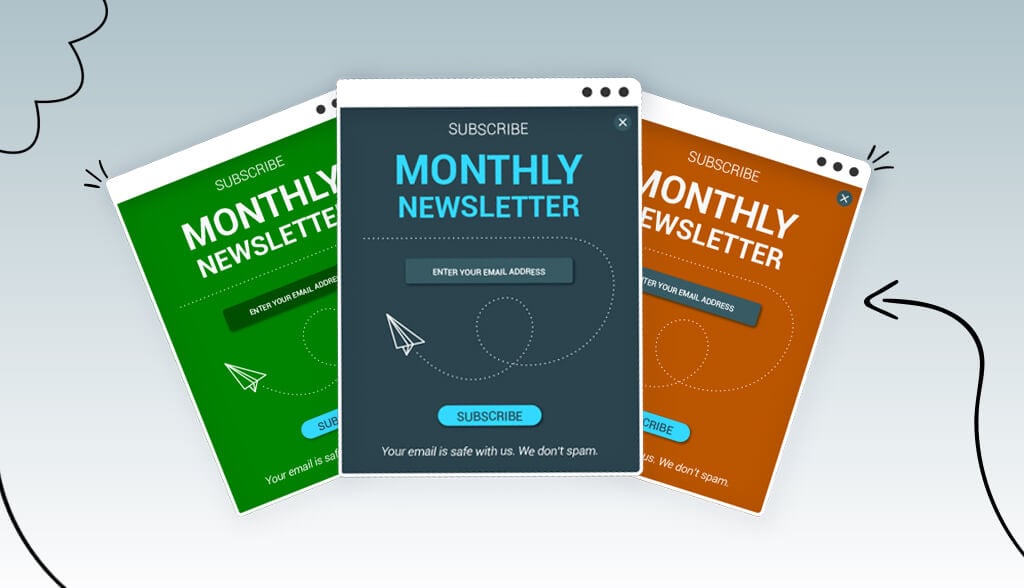
You’ve put in the elbow grease to collect customers’ emails, but now you need to do something with them. This is where the newsletter comes in.
To give you a deeper look into newsletters, I interviewed Tailor Brands’ product marketing manager, Tal. He explains, “newsletters can be a lot of things, but generally speaking, they’re a way to communicate with your customers. Even if they’re not buying from you at the moment, newsletters keep your business fresh in the customer’s mind.”
While social media posts target audiences while they’re scrolling on the apps themselves, newsletters go straight into your customer’s inbox. Newsletters can help showcase new products, announce sales and discounts, and keep customers engaged with your business.
Newsletters are like the superheroes of the marketing world. They do it all!
So, if you’ve been wondering if you need a newsletter, the answer is yes. In this article, I’m going to show you why you need newsletters in your marketing strategy and some examples of killer newsletters.
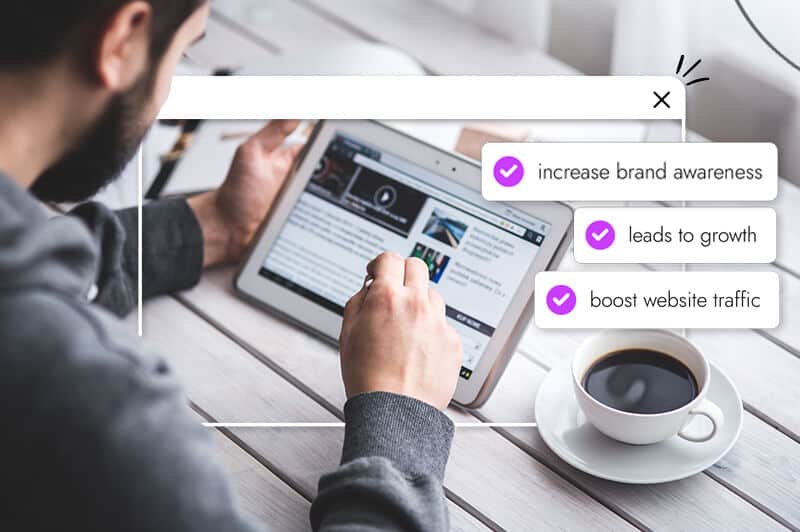
I lightly touched on why newsletters are an amazing marketing tool, but it’s time I dove into it. You know, got real deep, One Direction deep (are they still a thing?).
When it comes to newsletters, they’re gravely underestimated. A newsletter? But Instagram is so much better. Is it Becky? Is it better?
While social media platforms like Facebook and Instagram are amazing marketing tools (there’s no doubt about that), email remains one of the most highly used forms of communication.
For example, there are 2.9 billion Facebook users, with 1.9 billion checking their Facebook daily. Not bad numbers, right? But there are 4 billion email users, with 99% of email users checking their email every day.
What does this data say? If you’re not using interacting with customers via email, you’re missing out on potential sales. But there’s more to newsletters than that. Here are some valuable benefits of having a newsletter campaign for your business.
Creating valuable newsletters is a great way to increase brand awareness and demonstrate to your customers the skills and knowledge you have. Contrary to popular belief, newsletters aren’t only designed to sell products or services. They can also be used to build awareness and authority.
For example, let’s say you own a dog training business. You can use newsletters to provide valuable content for your audience, such as a video on how to train your dog not to bark or a blog post on the best brands of dog food. Through this, you develop stronger relationships with your audience.
One huge difference between social media and newsletters is the lack of personalization via social media.
Sure, you can reply to customers’ comments, but you’re limited with how you can connect with your subscribers. With newsletters, you can send them happy birthday emails, keep track of their order history, recommend products, and send them reminders.
Newsletters not only increase brand awareness, but they’re also powerful for growing your business. According to McKinsey research, your business is 40 times more likely to get new customers from email marketing than through social media.
Why? Because of the benefits you just read. Newsletters encourage growth by increasing brand awareness and building a relationship with the consumer. When prospective customers see your brand as valuable, they’re more likely to support it.
Newsletters are an amazing tool to help increase organic traffic to your website. If you want to encourage customers to check out your website, a newsletter is a great tool for this as you can showcase products and give incentives like discounts.
With a CTA (call-to-action) linking back to your website, users will come to your site organically. So, you’re not solely relying on search engines or social media for this traffic.
The beautiful part of newsletters is they connect subscribers already interested in receiving emails from your business. They want to stay connected and know what’s going on.
So, a newsletter is low-risk and high-reward. You’re not speaking to a general audience where you need to gain their trust.
You’re engaging with pre-selected customers and have already determined your business to be trustworthy; thus, they’re more likely to respond positively to your newsletters.
You’re a small business, so you keep a close eye on your purse strings (I was no different when I had my business). So, if you can engage with customers and increase sales without investing too much money, that’s a dream come true.
A big benefit of newsletters is their affordability. Many email marketing tools go by the size of your audience, so if you’re just starting out, you can use many platforms for free until your business grows.
How many people opened your email? How many clicked on the CTA? How many people purchased an item after opening your newsletter?
You’ll be able to answer all those questions because newsletters come with valuable analytics to help you understand what your customers are responding to (whether it be positive or negative).
With these metrics, you can see what visuals and language work best and encourage subscribers to purchase your product or service.
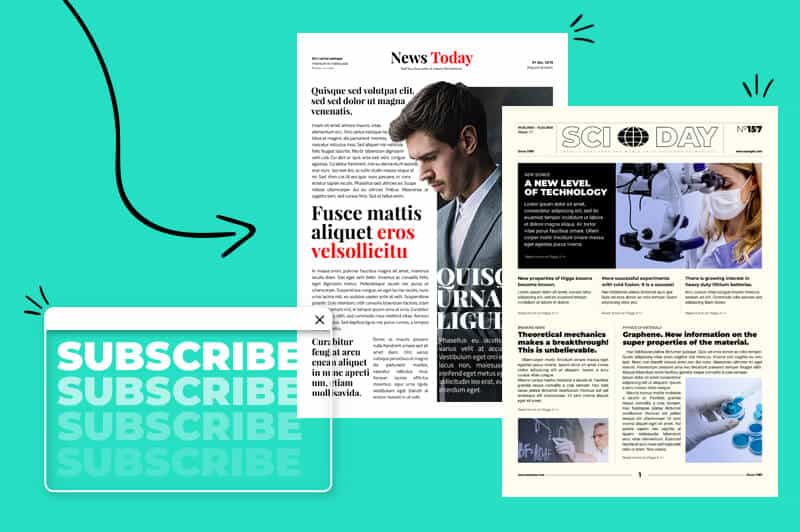
Knowing the benefits of a newsletter is only the first step. Now it’s time for you to see what makes a good newsletter.
While I will talk about it, it’s important you see visual examples to help you understand what makes a good newsletter.
So, here are 5 amazing newsletters and why they work.
Houzz is an online community for anyone interested in home design. Their weekly newsletter gives followers ideas for home decoration/renovation.
So, let’s talk about their newsletter and what makes it a good one.
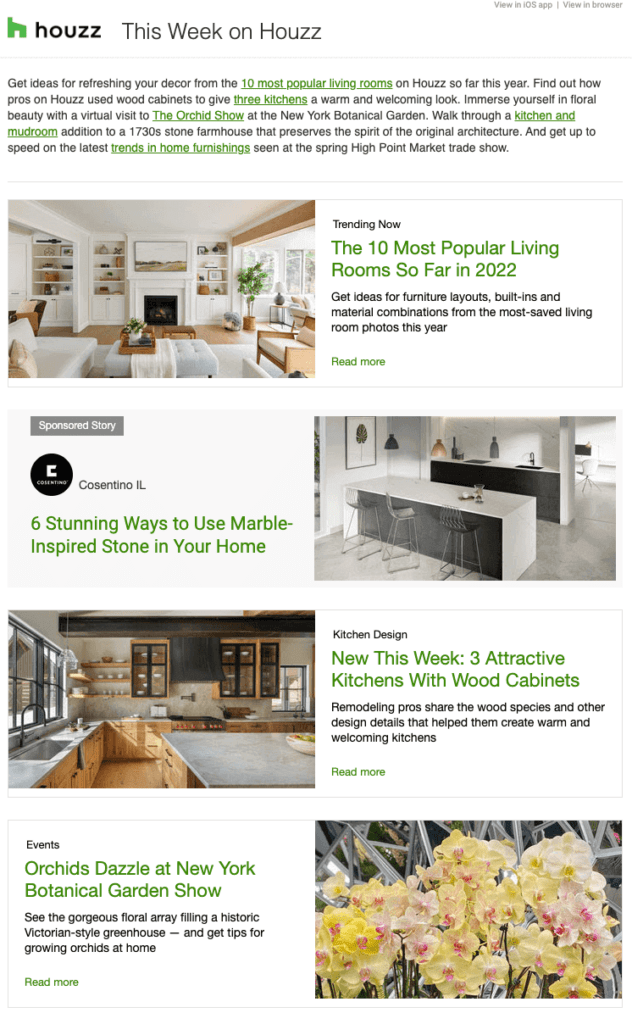
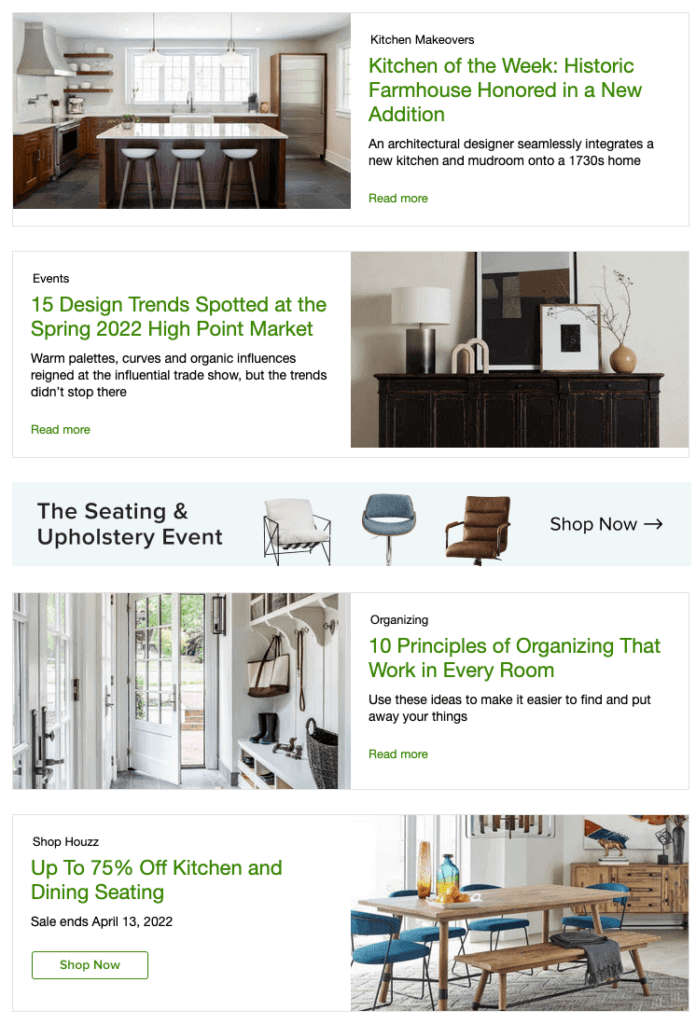
Houzz offers products and services for people looking to renovate their homes; however, you don’t know that until mid-way down the newsletter. Yes, they do have two CTA’s, but the main purpose is to provide helpful renovation tips and designs to readers. As you see, the rest of the newsletter provides valuable content to its audience.
“The most important thing about a newsletter is that you bring value to the reader,” Tal explains. And Houzz does just that. This newsletter shows that yes, you can create valuable content-based newsletters for your audience. Just make sure to include a CTA so they can reach your product or service with ease.
Takeaway: Not everything has to be about hard selling. You can provide the reader with a content-based newsletter and include a CTA to your product or service. Just make sure the content isn’t looking too busy.
Medium is an open publishing platform where writers and readers can express their opinions and feelings on a variety of topics. It’s where people can go to share stories, articles, poems, etc.
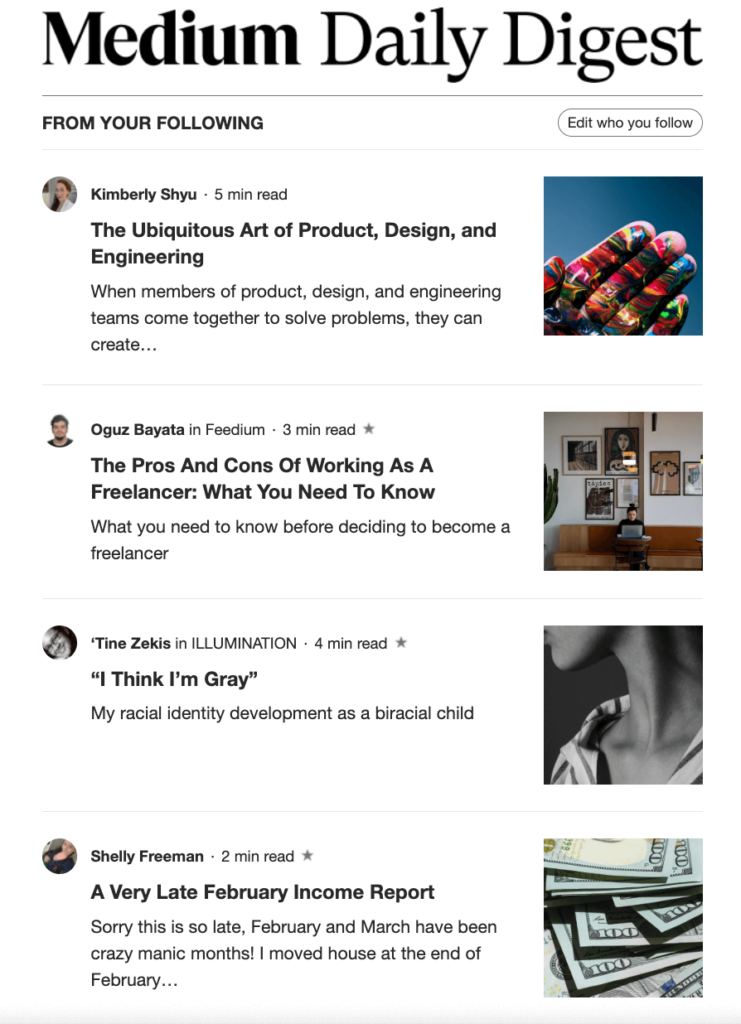
Medium is an open platform but does offer a subscription service for readers. The articles showcased within this newsletter are a mix of free and subscription-only articles.
What’s good about this newsletter is that it’s straightforward, clean, and gives the customer exactly what they’re looking for.
Takeaway: You don’t need a newsletter full of glitz and glam. Clean and simple is often very effective and doesn’t overwhelm the reader.
Fleur & Bee is a vegan, cruelty-free skincare company that prides itself on creating clean and natural products at an affordable price.
Now, let’s take a look at the newsletter below.

“You want your newsletter to be engaging,” Tal says, “You want them to scroll through it and click on the call-to-action.” Just looking at Fleur & Bee’s newsletter, you can see that they nailed it.
Their newsletter offers free consultations to help their customers achieve a proper skincare routine using their products.
The CTA is very clear, but below that, they also offer blogs and videos showcasing their products. So, if the reader isn’t sure if they want to book a consultation, the blogs and videos will give them extra information and reassurance.
Takeaway: To persuade readers to click the CTA, you can add valuable content to increase brand trust and authority.
Never Fully Dressed is a London-based women’s apparel store for all shapes and sizes. Their brand uses bold prints, and colors in their clothing and their newsletter reflects this.
“Choose a style that suits your brand,” Tal says. “It should be in sync with your brand’s color palette and style. You want it to look cohesive with the rest of your business.”
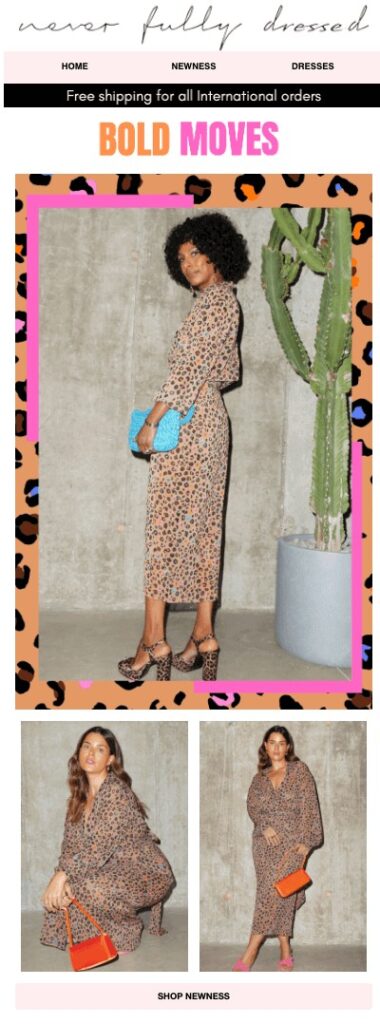

As you can see, this newsletter isn’t about value-based content. It’s a sales newsletter, and there’s nothing wrong with that.
Never Fully Dressed’s newsletter uses the power of images to showcase its products and has two CTA’s on its newsletter.
“Images can help convey your message to the reader without overdoing it with text,” Tal says. “Images are a powerful element in your newsletter, so don’t be afraid to use them. In my opinion, they’re a must.”
But what about the CTA’s? Are two CTA’s too much on a newsletter?
“You can have a couple of CTAs on your newsletter. You want to make sure the CTA is always visible when scrolling down the newsletter, ” Tal recommends. “So, there should always be a CTA visible to engage and persuade the reader to continue through the buyer’s journey.”
Take away: Make sure your CTA is always visible on screen. That may mean you’ll need to include two CTA’s in your newsletter.
Morning Brew is a daily newsletter that covers the events happening in business, tech, finance, and everywhere else. On their website, they have various podcasts, courses, and products.
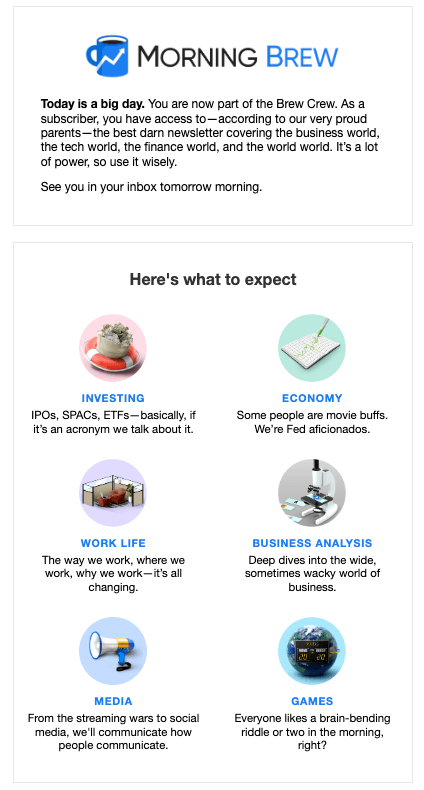
The Morning Brew’s newsletters perfect the art of simplicity. You’ve noticed I’ve mentioned keeping your newsletters clean and simple. When there’s too much on the screen, people don’t like it.
So, their newsletter has a lot of white space and keeps it to the point. More importantly, take a look at the language they use. Their newsletter uses language that they know connects with their audience. It’s casual and helps the reader relate to the content.
Takeaway: The language you use in your newsletter matters. Keep the language consistent with the rest of your brand. It’ll create consistency while building brand trust.
Now that you know what a newsletter is and why you should include them in your business, it’s time you take the next step and make your own newsletter.
Don’t worry; it’s not as scary as it sounds. Luckily, many free platforms are available to help you create a newsletter.
This portion of our website is for informational purposes only. Tailor Brands is not a law firm, and none of the information on this website constitutes or is intended to convey legal advice. All statements, opinions, recommendations, and conclusions are solely the expression of the author and provided on an as-is basis. Accordingly, Tailor Brands is not responsible for the information and/or its accuracy or completeness. It also does not indicate any affiliation between Tailor Brands and any other brands, services or logos.
Products
Resources
@2024 Copyright Tailor Brands